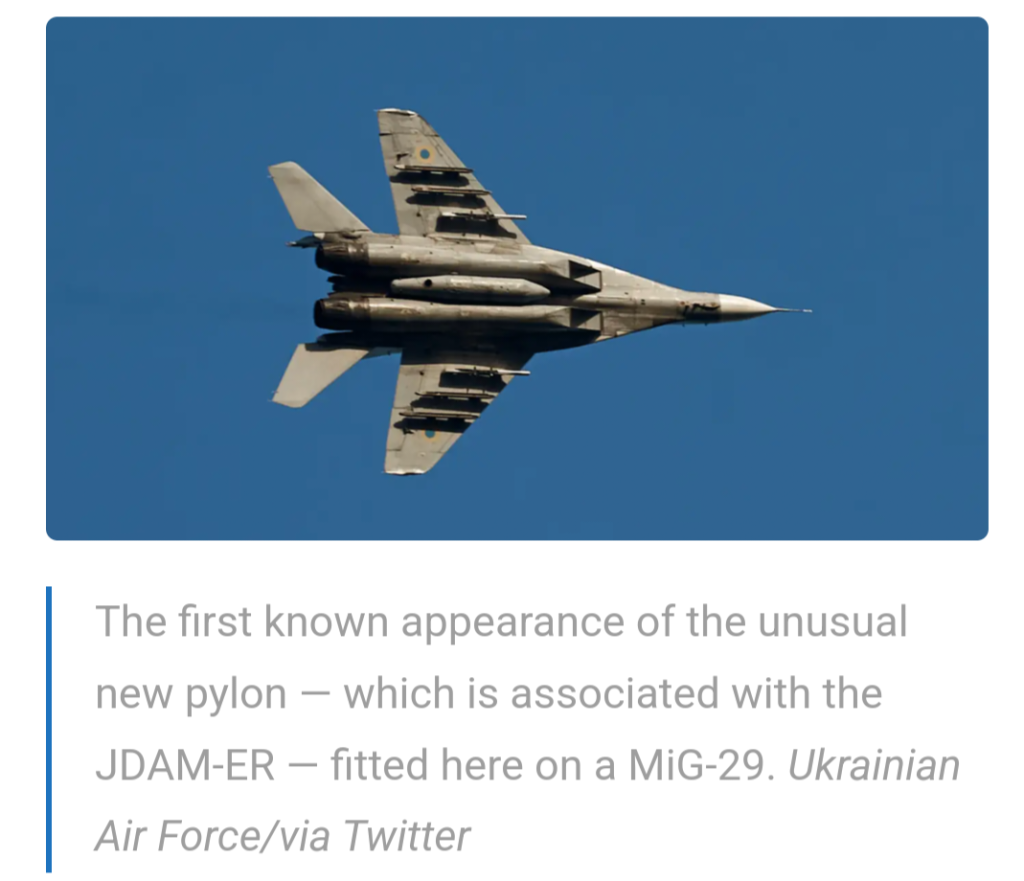Ukrainian Su-27 fighters are firing 2,000-pound JDAM-ER standoff bombs at Russian targets with launch specifications fed before the aircraft takes off.
Despite the Su-27 being capable of carrying Western bombs on the hardpoints, it is still not capable of in-flight programming of the point of impact. The introduction of the flight program and target thus occurs at the airfield just before the ammunition is hung on the aircraft, Militarnyi reported.
To date, only 500-pound Western bombs are known to have been used by the Ukrainian air force. JDAM kits could be carried only by Su-24M frontline bombers.
Ukraine has previously modified MiG-29 fighters to enable them to carry Western weapons.
JDAM is a guidance kit that converts unguided bombs, or “dumb bombs”, into all-weather precision-guided munitions. It consists of a tail section with aerodynamic control surfaces and an inertial control system paired with a GPS receiver.
The munition in the photo can be visually identified as a Mark 82 500-pound bomb. Its weight in the metric system is 230kg, of which 89kg is explosives.
Equipped with the JDAM-ER kit, the Mark 82 bomb is capable of striking the target at a distance of up to 72km with a maximum deviation from the target of up to 11m.
Although only very few photos have previously emerged of the JDAM-ER in Ukrainian service, these had so far only shown the weapons carried by MiG-29s — numerically the most important Ukrainian Air Force fighter. The carriage of these glide bombs by the MiG-29 was first indicated by a photo that showed an unarmed Fulcrum with unusual inboard underwing weapons pylons, with tapered triangular protrusions forward of the bomb’s mounting point.
This pylon design can now be seen much more clearly in the photo of the Su-27 with Lt. Gen Oleshchuk.
The unfinished metal appearance of the pylon suggests this is a bespoke piece of equipment expressly designed to make the MiG-29 and Su-27 compatible with the JDAM-ER. Again, we can see part of the forward protrusion on the pylon, although its function remains unclear. You can read about some of the possibilities in our previous report.


